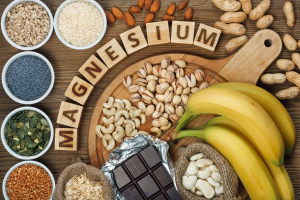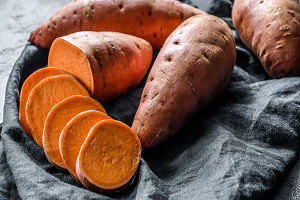

Are you planning a sweet surprise for your loved one this Chocolate Day? We all have a penchant for chocolates and gifting chocolates to your loved ones is the easiest way to make them smile. Celebrated on February 9 every year during Valentine’s Week, Chocolate Day has an interesting backstory. Read on to walk through the history of this day and learn the essential health benefits of chocolates.
History of Chocolate Day
The roots of Valentine’s Day date back to the Romanian Era. However, the tradition of gifting chocolates and celebration of Chocolate Day is quite recent and the credit goes to Mr. Richard Cadbury. It was in the 19th century when a British family used cocoa butter extracted from chocolate liquor for making chocolate and this idea impressed Mr. Cadbury. It was then that Mr. Cadbury tried to use these mouth-melting chocolate bars economically.
We are all aware of the famous British brand Cadbury and surprisingly, this brand was the first to introduce heart-shaped chocolates boxes. Mr. Richard made beautiful handcrafted heart shaped chocolate boxes that could be gifted to loved ones. In this way, the company was able to change the way we celebrate the month of love in a sweet way.
Types of Chocolates and Their Nutritional Facts
Let us learn about the different kinds of chocolates as Chocolate Day approaches. Each kind of chocolate has its own benefits and we think you should know about them before you start buying chocolates on February 9 or July 7 (World Chocolate Day). Let us have a sneak-peek at the different types of chocolates:
1. Milk Chocolate
The process of chocolate making, specifically milk chocolate, consists of liquid, powdered, or condensed milk. Daniel Peter, a Swiss confectioner, was the first to develop milk chocolate in the year 1875. This type of chocolate usually contains around 12 percent of milk solids and 20-25 percent of cocoa among other things. It is creamier and softer than other forms of chocolates. It has a sweet taste due to the dairy content and melts easily.
The sweetness and creaminess of milk chocolate makes it a perfect Valentine’s chocolate. It is a very popular treat among people who have a sweet tooth, no matter their age. The low melting point of this type of chocolate also makes it ideal for baking or preparation of desserts. However, those with lactose intolerance should avoid having milk chocolates.
2. White Chocolate
White chocolate is a pale, ivory-coloured chocolate confection that is made using milk solids, cocoa butter, sugar, and at times vanilla. You will be surprised to know that this type of chocolate does not contain any cocoa solids. The cocoa butter, milk, and sugar content makes it extremely creamy and sweet in taste.
White chocolates are great for preparing desserts and confectionaries. However, a white chocolate bar is extremely sweet, so you need to use it in a small amount. Most people use white chocolates to balance the bitterness of dark chocolates.
3. Dark Chocolate
Dark chocolate or plain chocolate contains the highest percentage of cocoa and is the healthiest of all forms of chocolates. It contains fat content from cocoa butter and not milk. It can contain 45 to 100 percent of cocoa or cocoa solids as per requirement. The taste is mostly bitter and can be an acquired taste for a few people.
Rich in nutrients, you can use dark chocolates to make desserts or have them as they are. You can gift a dark chocolate or any dessert that contains it as a Chocolate Day special to your paramour.
Health Benefits of Chocolate
Here are some benefits of having a chocolate bar:
- The antioxidants like polyphenols, flavonols, and catechins present in dark chocolate can help to reduce inflammation and damage due to ageing.
- Chocolates are a rich source of magnesium, copper, iron, manganese, potassium, and zinc.
- The flavonoids present in chocolates can help to give you a glowing skin and avoid sunburn.
- Phenylethylamine is an organic compound present in chocolates that helps you stay in a good mood.
- Dark chocolates can help lower the blood pressure levels.
- Chocolates can actually help to reduce weight.
- They help improve the memory and concentration owing to the presence of flavanols in dark chocolates.
- Chocolates can help to lower the bad cholesterol levels in the body.
Conclusion
So, we discussed chocolate history, different types of chocolate, and all about Chocolate Day. If your partner is conscious about their fitness, then a healthy chocolate would be a great choice. We wish you a happy Valentine’s Week and a healthy and happy Chocolate Day.
Frequently Asked Questions About chocolate
Q2. What are some interesting facts on chocolate?
Some facts you should know about chocolate include:
- During the Mayan Period, cacao beans were used as a currency and were considered to be of more value than gold dust.
- Every cacao tree produces around 2500 beans.
- The smell of chocolate can trigger an increase in theta waves of the brain, resulting in better relaxation.
- 40-50 million people across the globe depend on chocolate for their livelihood.
- Chocolate consumption is harmful for your furry pets.
Q3. How can eating chocolate be beneficial for health?
The benefits of chocolate include:
- Reduction in the levels of LDL or bad cholesterol
- Reduction in the risk of heart disease
- Athletic performance boost
- Enhancement of the cognitive function
Q4. What are the major types of chocolates?
The three main types of chocolate include:
- Milk chocolate
- Dark chocolate
- White chocolate




